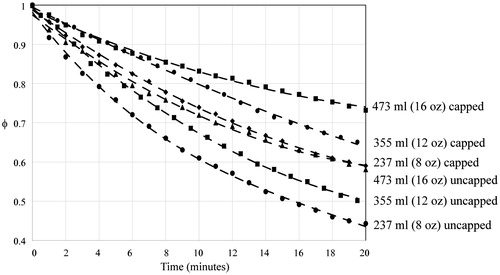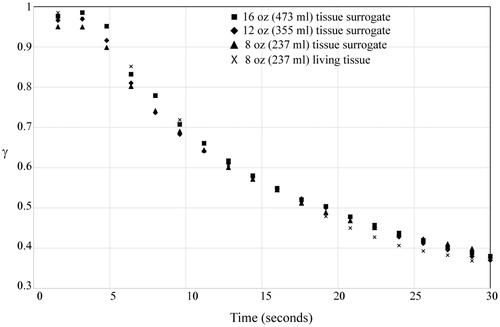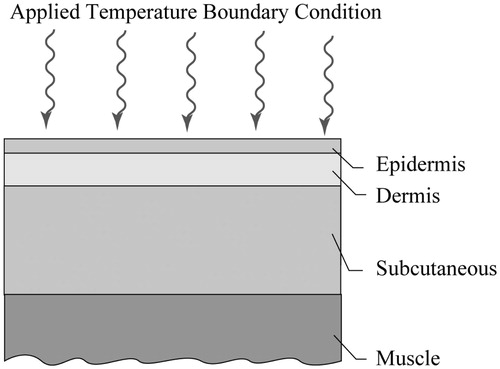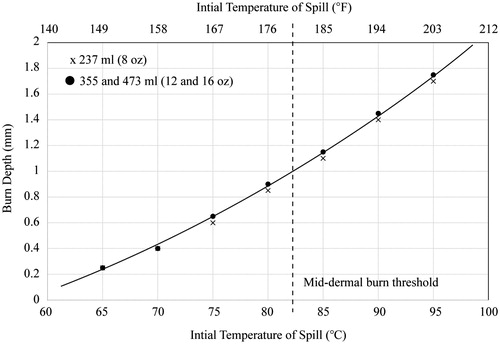Figures & data
Table 1. Various parameters investigated in the cooling experiment.
Figure 1. Experimentally obtained timewise cooling of (a) 237-ml (8-oz) beverages, (b) 355-ml (12-oz) beverages and (c) 473-ml (16-oz) beverages.
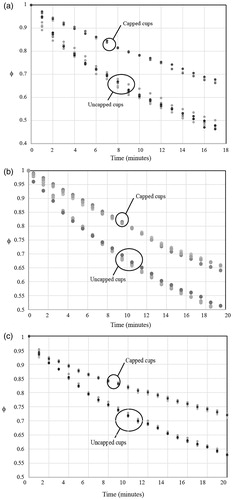
Figure 2. Timewise cooling of (a) 237-ml (8-oz), (b) 355-ml (12-oz) and (c) 473-ml (16-oz) beverages with ±2 standard deviation envelopes.
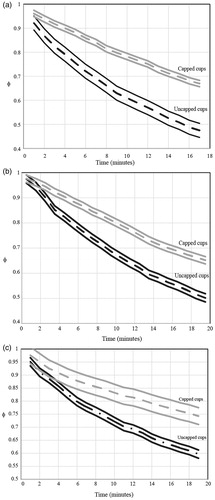
Table 2(a). Thicknesses of tissue layers used in model (mm).
Table 2(b). Summary of thermophysical properties used in the calculations.
Table 3(a). Impact temperatures in °C for an 8-oz (237-ml) beverage spilled without a cap.
Table 3(b). Burn depths (mm) for an 8-oz (237-ml) beverage spilled without a cap.
Table 4(a). Impact temperatures in °C for an 8-oz (237-ml) beverage spilled with a cap.
Table 4(b). Burn depths (mm) for an 8-oz (237-ml) beverage spilled with a cap.
Table 5(a). Impact temperatures in °C for a 12-oz (355-ml) beverage spilled without a cap.
Table 5(b). Burn depths (mm) for a 12-oz (355-ml) beverage spilled without a cap.
Table 6(a). Impact temperatures in °C for a 12-oz (355-ml) beverage spilled with a cap.
Table 6(b). Burn depths (mm) for a 12-oz (355-ml) beverage spilled with a cap.
Table 7(a). Impact temperatures in °C for a 16-oz (473-ml) beverage spilled without a cap.
Table 7(b). Burn depths (mm) for a 16-oz (473-ml) beverage spilled without a cap.
Table 8(a). Impact temperatures in °C for a 16-oz (473-ml) beverage spilled with a cap.
Table 8(b). Burn depths (mm) for a 16-oz (473-ml) beverage spilled with a cap.
Table 9. Burn risk for various service temperatures and cooling durations for cups which are not capped. “DP” signifies a deep-partial-thickness burn or worse and “SP” indicates superficial-partial-thickness burn or worse. This table corresponds to adults with 2 mm dermal layer thickness.
Table 10. Burn risk for various service temperatures and cooling durations for cups which are capped. “DP” signifies a deep-partial-thickness burn or worse and “SP” indicates superficial-partial-thickness burn or worse. This table corresponds to adults with 2 mm dermal layer thickness.

